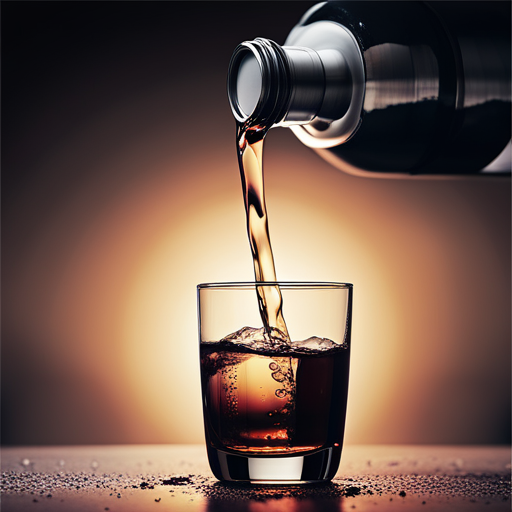Are you tired of drinking tap water that tastes or smells unpleasant? It’s not uncommon to experience bad-tasting or smelly tap water, but luckily, there are solutions to help you improve the quality of your water.
In this article, we’ll explore seven different solutions to help you say goodbye to bad tap water once and for all. First, we’ll look at the common causes of bad-tasting and smelly tap water, which can include chlorine, sulfur, bacteria, mineral content, and poorly maintained filters and treatment equipment.
We’ll also discuss the importance of safety and regulations when it comes to drinking water, so you can be confident that your water is safe to drink. With this knowledge, we’ll dive into the seven solutions, including point-of-entry and point-of-use treatment systems, refrigerator water filtration, and pitcher filters.
By the end of this article, you’ll have the tools and knowledge to enjoy refreshing, great-tasting water in your home. So let’s get started on saying goodbye to bad tap water!
Key Takeaways
– Bad taste or smell in tap water can be caused by chlorine, sulfur, bacteria, mineral content, and poorly maintained filters and treatment equipment.
– Different types of bad taste in tap water include chemical or chlorine, metallic, bitter, salty, earthy or fishy, dirty, sulfur or rotten eggs, and pencil shavings.
– Tap water with bad taste or odor is usually safe to drink, and federal law and EPA regulations ensure drinking water meets safety standards.
– Solutions for bad tasting or smelly tap water include point-of-entry or point-of-use treatment, refrigerator water filtration, and pitcher filters, depending on the specific taste or smell issue. Regular maintenance of filters and treatment equipment is important to prevent bacteria growth and maintain water quality.
Causes of Bad Taste and Smell
You may be experiencing bad taste or smell in your tap water due to various reasons. Groundwater contaminants, such as sulfur and bacteria, can cause a foul smell and taste in your water. Additionally, chlorine is added to tap water for disinfection purposes, which can also affect the taste and smell.
While the taste and smell of tap water may be unpleasant, it doesn’t necessarily have a negative impact on your health. The chemicals and minerals present in tap water are typically at safe levels and regulated by federal law and EPA regulations.
However, if you’re concerned about the quality of your tap water, there are solutions available to improve its taste and smell.
Safety and Regulations
Ensure the safety of your drinking water by understanding federal laws and EPA regulations that govern water quality standards. The EPA sets standards for over 90 contaminants in drinking water and requires that public water systems meet these standards. Private well owners are responsible for testing their own water and ensuring that it meets these standards.
The EPA also requires public water systems to provide annual Consumer Confidence Reports that detail the quality of the water and any contaminants found. Risks of untreated water can include exposure to harmful bacteria, viruses, and parasites that can cause illness. These contaminants can enter the water supply through a variety of sources, including agricultural runoff, sewage overflows, and industrial waste.
It’s important to remember that even if tap water appears clear and odorless, it may still contain harmful contaminants. By ensuring that your water meets EPA standards and using appropriate water treatment systems, you can protect yourself and your family from the risks associated with untreated water.
Solutions and Treatment Systems
Looking for ways to improve the taste and quality of your drinking water? There are various treatment systems and solutions available to help you get rid of bad taste or smell in your tap water.
One option is to install a point-of-entry (POE) system, which treats all water in your home. This system is more expensive and requires professional installation, but it is effective in getting rid of all contaminants in your tap water.
Another option is to use a point-of-use (POU) system, which treats water where it is used. This system is less expensive and can be installed DIY, but it only treats water in specific areas such as your kitchen sink or shower.
If you are on a budget, there are other options available. One of them is to use a refrigerator water filtration system, which is budget-friendly and can be easily installed in your fridge. Another option is to use a pitcher-style filter, which removes bad taste and odor from drinking water. This option is also budget-friendly and easy to use.
Regardless of which treatment system or solution you choose, it’s essential to maintain and replace filters regularly to prevent bacteria growth and ensure the effectiveness of the treatment system.
Conclusion
Now that you’ve learned about the causes of bad tap water taste and odor, as well as the safety regulations in place, it’s time to explore the solutions available to improve your water quality.
From point-of-entry and point-of-use treatment systems to refrigerator water filtration and pitcher filters, there are several effective options to choose from.
Remember, regular maintenance is key to preventing bacteria growth and ensuring your water remains safe to drink. So, say goodbye to bad tap water and enjoy refreshing, great-tasting water in your home by implementing one of these solutions today!
